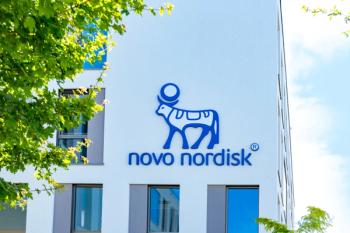
US Pharma Challenges 2014
Pricing and personalized medicine are key themes shaping drug development and marketing in the U.S. in 2014, writes Jill Wechsler.
Pricing and personalized medicine are key themes shaping drug development and marketing in the U.S. in 2014, writes Jill Wechsler.
A
midst the turmoil over implementing Obamacare, federal policy makers continue to seek ways to prevent disease and improve care while reining in health care spending. Innovative therapies that keep patients out of hospitals promise to help realize these goals, provided industry, regulators and policymakers can address key scientific, regulatory and marketing questions in the coming months:
Will health reform expand drug coverage?
The promise of Obamacare is that extending coverage to millions of uninsured Americans will greatly increase drug utilization and reimbursement. But the picture has been clouded by reports of new exchange plans with limited formularies and high co-pays for medicines, particularly for specialty drugs. Such actions threaten patient access to needed therapies, generating talk of legislation to curb specialty tiers and to extend Medicare Part D “protected drug classes” to private plans.
Are U.S. price controls inevitable?
Many analysts blame access problems on high drug prices, particularly compared to lower cost medicines in Europe and other regions. So far, pharma companies have deflected proposals to reduce public spending through rebates on drugs for low-income Medicare “dual eligibles” or by government negotiation of Medicare drug reimbursement. But limits on drug exclusivity have support, and specialty pharma will face more intense scrutiny this year.
Will inexpensive generic drugs continue to increase?
More than 80% of prescriptions in the U.S. involve generics, with the Medicare Part D program driving the trend. More will come to market faster with generic manufacturers now paying user fees to speed up the Food and Drug Administration approval process for these products. But the shift to generics may slow down, as many blockbuster drugs already have lost patent coverage.
When will biosimilars appear?
Insurers and pharmacy benefit managers are eager for less costly versions of key biotech therapies, but the first such product has yet to make it through the complex U.S. regulatory and legal framework. Many widely used biotech therapies will lose patent protection over the next few years, and dozens of small and large biopharma companies are lining up to develop comparable therapies. FDA promises further guidance on the testing needed to demonstrate biosimilarity, and agency officials will continue to meet with firms to help them establish viable product development strategies.
Is FDA blocking innovation?
FDA had approved only 26 new molecular entities as of early December 2013, much less than the near-record 39 new drugs in 2012. There’s no slow-down in approvals, explained John Jenkins, director of FDA’s Office of New Drugs, at the December FDA/CMS Summit; the problem is that fewer new drug applications were filed. Jenkins noted that a more transparent new drug review program is helping sponsors remedy shortcomings more quickly and rescue troubled applications.
Can personalized medicine fill pharma pipelines?
Access to genomic data and effective diagnostics will continue to spur development of therapies for small patient populations with serious conditions. Orphan drugs already account for a significant portion of new drugs approved by FDA, and that will increase as Big Pharma shows more interest in these markets. FDA will continue to encourage orphans and breakthroughs with special assistance to streamline development and approval.
What about treatments for major diseases?
At the same time, regulatory officials worry about declining investment in new therapies for broader conditions, such as diabetes and cardiovascular diseases affecting millions. Jenkins urged another look at “me-too” drugs. “Having more choice is good,” he says, noting the first-in-class drug is not always the best.
Can new partnerships fill gaps in biomedical research funding?
The budget squeeze at FDA and the National Institutes of Health, along with declining drug company revenues, are spurring more collaboration across the biomedical research enterprise. Three leading cancer research centers recently formed a joint venture to investigate innovative pathways for developing cancer treatments. Major manufacturers are negotiating research agreements with biotech firms, instead of just buying them. Pre-competitive partnerships are proliferating, tackling data sharing and patent issues in the process.
Can clinical trials become more efficient?
High R&D costs underlie the hefty price tags on many new drugs, emphasizing the importance of streamlining research operations and testing requirements. Multiple partnerships and collaborative initiatives are working to establish standards, harmonize electronic data systems and utilize new models for protocol design. Yet concerns about patient privacy and safety complicate the process. Debate will continue over these issues, plus appropriate use of biomarkers and endpoints in clinical trials and the role of more innovative analytical methods and study designs.
Will drug shortages persist?
Patients and health providers become alarmed when they can’t obtain needed medicines, and when alternate supplies from compounders turn out to be contaminated and lethal. FDA is moving quickly to establish policies and procedures authorized by new legislation to detect and prevent critical shortages and to regulate large-scale compounders of sterile injectibles. However, the long-term solution, say agency officials, is for manufacturers to invest more in systems to ensure consistent production of quality products, and FDA wants to see more action in this area.
How will social media transform pharma promotion?
Personalized medicine means more targeted marketing, along with less spending on traditional advertising. Reliance on legions of sales reps continues to decline as doctors and hospitals close their doors. Yet, FDA regulations limit marketer use of the Internet and electronic messaging systems to discuss their products. Pharma companies want to utilize social media to better educate patients about proper compliance and prescribing. FDA oversight of these strategies is critically needed.
Will FDA get sufficient resources?
Jenkins and FDA commissioner Margaret Hamburg also emphasized at the FDA/CMS summit the need for more resources to support the agency’s ever-expanding responsibilities. While praising Congress for providing added authorities that will help FDA fulfill its mission, Hamburg urged the legislators to approve the “kind of real resources — not just new mandates and authorities”— needed to meet greater challenges. Jenkins expressed frustration that budget cuts and sequestration have siphoned off resources, including a portion of already-paid user fees. This development, together with the steady rise in fees supporting drug regulation, may prompt a broader re-examination of the user fee program in coming months.
Newsletter
Lead with insight with the Pharmaceutical Executive newsletter, featuring strategic analysis, leadership trends, and market intelligence for biopharma decision-makers.





